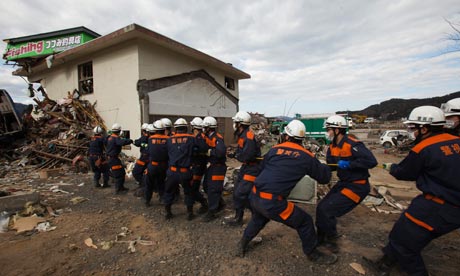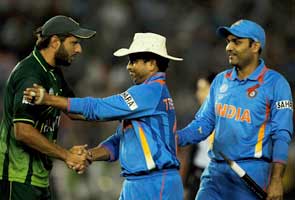
The Cup was won with Gambhir as an integral part of the triumph
There are many in this team who can thrill people. Sachin Tendulkar, Virender Sehwag, Yuvraj Singh, Mahendra Singh Dhoni...But Gautam Gambhir thrills them differently.
He loves a fight. He could have been a good boxer. He is mentally tuned to indulge in a combat at the shortest notice. So what if he is short in stature? “Height does not matter,” he asserts. His mantra is simple: “Adaptability and adjustment make you ready for any battle.” This is what he has been reminding himself from the time he slammed a century, as a 12-year-old, or maybe 13, in a local tournament.
Gambhir can be really explosive — the strokes from his bat matching his temper, hurting the bowler, embarrassing the fielders. They often watch in exasperation, as did the Sri Lankans the other night when the left-hander went about repairing the early damage of losing Sehwag and Tendulkar.
As the crowd roars and the bowlers wilt, he makes his moves. Not that he waits for such an opening. If the first ball he faces deserves punishment, it will be dealt with appropriately. “Learnt it from Viru (Sehwag),” he confessed once.
Gambhir grew in Sehwag's shadow, aping him, idolising him, and sometimes matching him, but always admiring his range of shots.
Blessed with talent, and a strong mind, why does he lose temper then? It is put on, to push himself, to set up a fight. Nothing can put him down; nothing. The state of the pitch and the character of the opposition do not matter to him.
Call it arrogance. Or confidence.
He remembers his strong points when the fight begins. Nothing has changed in his game. He wants to dominate, dictate, and, essentially, perform. He loves to create a situation and then tackle it like a champion. He has grown to back himself and has often succeeded.
Champions love to be part of a weak outfit and take on the formidable. Gambhir belongs to that league.
A difficult period
Imagine, he had chucked away his bat in 2007 on being ignored for the World Cup. It was a difficult period. He knew nothing other than cricket. And cricket suddenly appeared to be slipping from his grasp. Close to quitting, he reminded himself of the days when he pursued the dream of winning the World Cup for India.
So, he went back to local competitions, domestic circuit, and lit up the contests with his fireworks, sometimes verbal, but mostly cricketing.
Guiding him right through was Sehwag, one explosive batsman challenging the other. Sehwag would tease him, saying, “you can come in only if you displace me. Try!” And Gambhir tried, not to displace Sehwag, but take a leaf out of his philosophy. By fighting for his space in Indian cricket.
To get the best out of his bat, he needed to live with the willow. He did just that, backed by coach Sanjay Bhardwaj.
A few saw Gambhir toil in blistering heat, hone his skills, and prepare to conquer, which he did with a match-winning performance. He was denied a century by three runs — his own making — but then he had done his job.
He had dreamt of this occasion. He lost the man of the match award but won the match!
A man of few words
Gambhir, 29, is a man of few words. But he loves to speak through his cricket, his bat doing the talking. You may not need a stump mike to hear his outbursts against the opposition, especially Shahid Afridi, but you would have to strain your ears during one-on-one close conversations with him.
He can be polite to a fault but tough to argue with when he decides to take on the opponent to make a point.
He was learning to walk when India won the World Cup in 1983. On Saturday night, he was one of the wings on which Indian cricket took a concerted flight. The Cup was won with Gambhir as an integral part of the triumph.
A dream was realised at the Wankhede Stadium. And Gambhir, as is his wont, controlled his emotions. Fighters don't shed tears when they win. Gambhir,the street fighter, perhaps, has saved the tears of joy for another day.












 Sachin Tendulkar said on Saturday's World Cup triumph was the proudest moment of his life as India beat Sri Lanka by six wickets to capture the "ultimate" prize after a gap of 28 years.
Sachin Tendulkar said on Saturday's World Cup triumph was the proudest moment of his life as India beat Sri Lanka by six wickets to capture the "ultimate" prize after a gap of 28 years.
